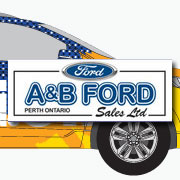Blog
6 Things To Know When Buying Sunscreen
- Details
- Category: Blog
- Published: Thursday, 18 July 2019 14:33
 Everyone knows that applying sunscreen is important to avoid sunburn, skin damage and skin cancer. But with all of the confusing labels and numbers — how can you know you're making the best choice for you and your family?
Everyone knows that applying sunscreen is important to avoid sunburn, skin damage and skin cancer. But with all of the confusing labels and numbers — how can you know you're making the best choice for you and your family?
Consumer Reports can help. The publication recently released new research on the best sunscreens and what you should look for when purchasing one, some of the results were surprising.
Deputy editor of TODAY, Patricia Calvo shared some of the most important things you need to know:
1. YOU CAN’T ALWAYS TRUST A BRAND’S SPF LABEL
Both Consumer Reports and the American Academy of Dermatology Association recommend using a sun protective factor (SPF) of 30, at a minimum. Though just because a sunscreen says it has a certain SPF, doesn’t mean you can trust it.
“The problem is, in Consumer Reports testing, a lot of sunscreen we tested didn’t meet the SPF levels printed on the package," Calvo explained.
Out of 73 lotions, sprays and other products the research team tested, 24 showed protection of less than half of their labeled SPF number. Some products that touted an SPF of 50, actually only offered an SPF of 24.
So what should you do? A simple way to address this issue is to re-apply your sunscreen often. Experts suggest slathering on more product every two hours, and immediately after dipping in the pool or getting your skin wet.
You can also avoid this problem by purchasing a sunscreen Consumer Reports has tested to have a reliable SPF number. For their full list, see the detailed report or check out these products.
2. MAKE SURE YOUR SUNSCREEN HAS THE RIGHT INGREDIENTS
While you may think you’re doing yourself a favor by opting for mineral-based or "all natural" sunscreens, you might be doing the exact opposite.
“In our tests over the years, so-called 'natural' or mineral sunscreens — those that contain only titanium dioxide, zinc oxide or both as active ingredients — have tended to perform less well than those that have chemical active ingredients, such as avobenzone,” the report noted.
Put simply, look on the back of the sunscreen and identify the main active ingredient. Look for the chemicals avobenzone, octisalate, octocrylene or homosalate.
3. LOOK FOR 'BROAD SPECTRUM'
Broad spectrum products protect against the sun's two types of harmful rays: UVA and UVB.
UVA rays are primarily responsible for signs of aging such as wrinkles and sagging; while UVB rays are the main culprit behind sunburn. Both increase one's risk for skin cancer.
Make sure your product says it’s “broad spectrum,” meaning it protects against both UVA and UVB rays.
4. YOU DON’T NEED LABELS LIKE 'PEDIATRICIAN RECOMMENDED'
There are some labels that aren’t as tightly regulated, and don’t mean as much. Labels such as “pediatrician recommended” doesn’t mean it’s better than the next product, Calvo said.
5. USE SPRAYS WITH CAUTION, ESPECIALLY AROUND KIDS
There’s a reason why some people love spray sunscreen: It makes less mess! But there could also be less coverage if it's not applied properly.
“People tend to just spritz it around and then don’t really focus on rubbing it into skin,” Calva says. “Depending on the spray pattern, a lot of it goes into the air. You have to make sure you’re applying it directly to your skin and rubbing it in.”
In addition, Consumer Reports suggests you avoid using sprays, especially on children or babies, because of “risk of inhalation.”
6. SUNSCREEN ISN’T MAGIC
While sunscreen goes a long way to help protect your skin, it isn’t the only solution.
“It’s not a magic bullet that means you can stay in the bright sunshine all day long. Even if you’re wearing sunscreen you have to make sure you seek the shade, wear a hat and sunglasses, and take other measures,” Calvo says.
Enjoy the sunshine, but stay safe out there!
Via: today.com












